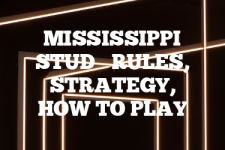Whist: The Classic Card Game – Understanding Rules, Strategy & How to Win Instructions
Introduction
Whist is a classic card game that has been enjoyed by many for centuries. Originating in England in the 17th century, it quickly gained popularity and spread across the globe. I remember my grandfather teaching me the game on a rainy afternoon, his eyes twinkling with mischief as he explained the rules and let me win the first couple of games.

It’s a game that requires a standard 52-card deck and can be played by four players in two partnerships.
The origins of the game can be traced back to the late Tudor period of English history, where it was initially known as “Trump”. Over the years, the game evolved and became more organized and strategic, hence the current name Whist, derived from the Old English word ‘wist’, meaning quiet or silent, reflecting the concentration required in the game.
Over the 17th and 18th centuries, Whist continued to gain popularity in England, becoming a regular pastime in coffee houses and private clubs. The rules of the game were first officially recorded in 1742 in Edmond Hoyle’s “A Short Treatise on the Game of Whist”. Hoyle’s book not only standardized the rules, but also introduced a scoring system.
By the 19th century, Whist had spread to other parts of Europe and North America. It was considered a sophisticated and intellectual game, often played in upper-class households and high society gatherings. The game was appreciated for its combination of chance and skill, with an emphasis on memorization and strategy.
In the late 19th and early 20th century, Whist evolved into Bridge, a variant that added a level of complexity and strategy. Some other variants of Whist also emerged, such as Solo Whist, German Whist, and Norwegian Whist. Despite these new versions, classical Whist continued to be played and enjoyed by many. In a 1980s survey by now-defunct playing card maker Waddington, it ranked as the second most popular parlor game in the UK, alongside Rummy and Pontoon, two games I’ve also written guides on.
Today, Whist has somewhat decreased in popularity, overshadowed by its offshoots like Bridge and Spades. However, it is still played in clubs and tournaments around the world, and continues to be a cherished game for those who appreciate its historical significance and strategic depth.
Quick Tip for Whist
Always remember, communication with your partner is key in Whist. However, it must be non-verbal. Your cards will do the talking!
Rules for playing Whist
- The game is played clockwise.
- Each player receives 13 cards from a standard 52-card deck.
- The last card dealt, which belongs to the dealer, is turned face up and determines the trump suit.
- The player to the dealer’s left leads the first trick. Players must follow suit if possible.
- The highest card of the led suit wins the trick unless a trump is played, in which case the highest trump wins.
- The winner of each trick leads the next.
These are the official rules, but house rules may vary. For instance, some play with a dummy hand or use bidding to determine the trump suit.
The Deal for Whist
The dealer shuffles the deck and the player to their right cuts it. The dealer then deals out all the cards one at a time, starting with the player to their left and continuing clockwise until each player has 13 cards.
How to Play Whist
- Setup: Players sit opposite their partner. The dealer is chosen at random.
- Gameplay: The player to the dealer’s left leads the first trick. The game continues as per the rules mentioned above.
- End of the Game: The game ends when all tricks have been played.
- Scoring: The team that wins the most tricks scores one point for each trick won in excess of six.
Scoring System in Whist
Whist is a classic trick-taking card game, typically played in two partnerships. The scoring system in Whist is quite simple, but it’s important to understand it thoroughly to play the game effectively.
1. Basic Score: In the standard version of Whist, a game is typically played until one team reaches five points. Each trick (round of play where each player contributes one card) above six that a team wins during a hand earns them one point.
2. Honors: In some versions of Whist, extra points can be scored if a team has a majority of the trump suit honors (A, K, Q, J) in their hands. If a team has three of the four honors, they earn two bonus points. If they have all four, they earn four bonus points. These points are scored regardless of who wins the hand.
3. Long Whist: In Long Whist, the game is played until one team reaches nine points. The scoring is similar to standard Whist, but points are also awarded to the team that wins the last trick of each hand.
4. No-trump Whist: In No-trump Whist, there is no trump suit. Teams earn one point for each trick won after the first six tricks.
5. Misère (or Misery): In this variant, the goal is to avoid winning tricks. A player who wins no tricks scores 5 points.
6. Scoring in Rubber Whist: In Rubber Whist, a game consists of multiple “rubbers” (sets of games). The team that wins two out of three games wins the rubber and scores a bonus of two points.
7. Slam: If a team wins all thirteen tricks, it scores a “slam.” The value of a slam varies in different versions of Whist but can range from 2 to 13 points.
The scoring system can be modified depending on the players’ preferences and the version of Whist being played. Before starting a game, the players should agree on the scoring rules to be used.
How to Win at Whist
Winning at Whist requires a good memory, strategic thinking, and effective communication with your partner. Keep track of the cards that have been played, especially the trumps. Try to deduce what cards your opponents hold and play accordingly.
Whist is a classic card game that requires strategy and skill. Here’s how you can improve your chances of winning:
1. Understand the rules: Whist is a trick-taking game played with a standard deck. Understanding the rules is the first step to mastering the game. Read the rules carefully and practice the game to get a good grasp of it.
2. Learn the scoring system: Each trick above six counts as a point for your side if you win the trick, and a point for the opponents if they win it. The first team to score seven points wins the game.
3. Practice: Like with any game, the more you practice, the better you become. Play with friends or family, or try online simulators to hone your skills.
4. Develop a strategy: Whist requires strategic thinking. For example, if your partner leads with a certain suit, they may be signaling that they have a strong hand in that suit. Learn these strategies and develop your own to outsmart your opponents.
5. Pay attention to your opponents: Your opponents’ moves can give you a clue about what cards they have. Watch them carefully and try to predict their next move.
6. Communication with your partner: In Whist, you have a partner. Developing a good communication strategy with your partner can greatly increase your chances of winning.
7. Counting Cards: Keeping track of which cards have been played can give you an advantage. It can help you predict which cards your opponents might have and plan your strategy accordingly.
8. Lead with your strongest suit: If you have a strong hand in a certain suit, lead with it. This can put pressure on your opponents and make it more difficult for them to win tricks.
9. Stay calm and patient: Like with any game, it’s important to stay calm and patient. Don’t rush your decisions, and take the time to consider your options before making a move.
10. Enjoy the game: Lastly, remember to enjoy the game. Winning is great, but it’s also important to have fun.
Best Strategies for playing Whist
One of the best strategies in Whist is to lead with a suit in which you have several high cards. This forces your opponents to play their high cards or to trump early. Also, try to keep track of what cards your partner plays to understand their strategy.
1. Understand the Rules: Before playing Whist, understand all the game rules. This includes knowing how to deal cards, the scoring system, and the order of gameplay.
2. Communicate with Your Partner: Whist is a partnership game. Understand your partner’s style of play and try to develop strategies that complement each other. However, remember that communication through signals or codes is not allowed.
3. Remember the Cards: Try to remember which cards have been played. This can help you anticipate what cards your opponents might still hold.
4. Count your Tricks: Keep a mental note of how many tricks you and your partner have won. This can guide your strategy during the game.
5. Lead with the Right Suit: Always lead with a suit in which you have several high-ranking cards. This will force your opponents to play their high cards early.
6. Play High Cards Early: If you have a strong hand, consider playing your high cards early to win tricks before your opponents can.
7. Use Trumps Wisely: If you’re playing a variant of Whist that includes trumps, use these powerful cards wisely. Don’t waste them on tricks you could win with lower cards.
8. Be Mindful of the Last Trick: The last trick can often decide the game, so be sure to save a high card or two for this crucial point.
9. Keep Track of Trump Cards: If there are trump cards in the game, keep track of which ones have been played and which ones are still out there.
10. Play to your Partner’s Strengths: If your partner has shown strength in a particular suit, try to lead with that suit to give them the opportunity to win tricks.
11. Keep Your Options Open: Try not to run out of a particular suit. It’s important to have cards from all suits at your disposal for as long as possible.
12. Learn From Each Game: Every game of Whist is a learning opportunity. Pay attention to what works and what doesn’t, and adjust your strategies accordingly.
13. Practice: Like any game, the key to becoming better at Whist is practice. The more you play, the better you’ll become at anticipating your opponents’ moves and coordinating with your partner.
14. Keep Emotions in Check: It’s easy to get frustrated when things don’t go your way. However, it’s important to stay calm and focused. Letting your emotions get the best of you can lead to poor decision-making.
15. Be Adaptable: Every game of Whist is different. Be ready to adapt your strategy based on the cards you’re dealt and the way the game unfolds.
Game Variations of Whist
There are several variations of Whist, including Knockout Whist, Bid Whist, and Solo Whist. Each variation has its own unique rules and strategies, adding a fresh twist to the classic game.
Whist is a classic card game that has been enjoyed by many for centuries. Over time, several variations of Whist have been developed, allowing players to enjoy new ways of playing this timeless game. The main variations include Knockout Whist, Bid Whist, and Solo Whist.
Knockout Whist, also known as Trumps in the United Kingdom, is a simple and fast-paced game that can be played by people of all ages. The rules are straightforward: each round, the player with the highest card of the lead suit wins unless a trump card is played. The unique aspect of Knockout Whist is that players are eliminated from the game if they fail to win a round, hence the name “knockout”. This adds a competitive edge to the game and encourages strategic play.
Bid Whist is a more complex version of the game, usually played by four players in partnerships. It incorporates bidding into the gameplay, which adds an extra layer of strategy. Players must predict how many tricks they think they can win and bid accordingly. The team with the highest bid gets to choose the trump suit. This variation requires good communication between partners and the ability to anticipate opponents’ moves.
Solo Whist is a version designed for four players, but unlike Bid Whist, there are no partnerships. Players play for themselves and must try to win as many tricks as they can. This version of the game features a bidding system where players can choose to play ‘solo’, ‘propose’ or ‘accept’. The ‘solo’ bid means the player believes they can win more than half the tricks on their own, while ‘propose’ and ‘accept’ involve teaming up with another player for that round. This adds an exciting unpredictability to the game as alliances can shift from round to round.
Each of these variations adds its own unique rules and strategies to the classic game of Whist. Whether players prefer the competitive nature of Knockout Whist, the strategic bidding of Bid Whist, or the dynamic alliances of Solo Whist, these variations offer fresh twists and new ways to enjoy this classic card game.
Scenarios for Whist
If you find yourself with a hand full of low cards, don’t despair. Try to play your low cards when your partner leads a trick, saving your high cards for later. If you have a lot of trumps, use them wisely to win crucial tricks.
Don’t lose hope if you’re dealt a hand full of low cards. Attempt to play these low cards when your partner initiates a trick, keeping your high cards for future play. If you possess many trumps, ensure you use them judiciously to secure important tricks.
Frequently Asked Questions about playing Whist
- What happens if I can’t follow suit? If you can’t follow suit, you can play any card. If you play a trump, you could win the trick.
- How many points do we need to win? The game is usually played until one team scores five points.
- Can I communicate with my partner? Only through the cards you play. Verbal communication is not allowed.
External Links
For a glimpse into how Whist was played in the past, check out this scene from the classic novel “Pride and Prejudice” where the characters engage in a game of Whist
Whist | Play it online (Free, no registration)

Eve Brownlee was a gamer before gaming communities on the internet were a thing. Eve grew up playing traditional, standard deck card games like Rummy and Bezique, taking an interest in the classics Backgammon and Chess. Parlor card games like Bridge continue to keep Eve active in the community. After a long career, primarily in horticulture for USDA in Maryland, Eve now travels and writes on The Pineapple (pineapples.info) and contributes to Quora/Pinterest topics. Contact Eve via email.



